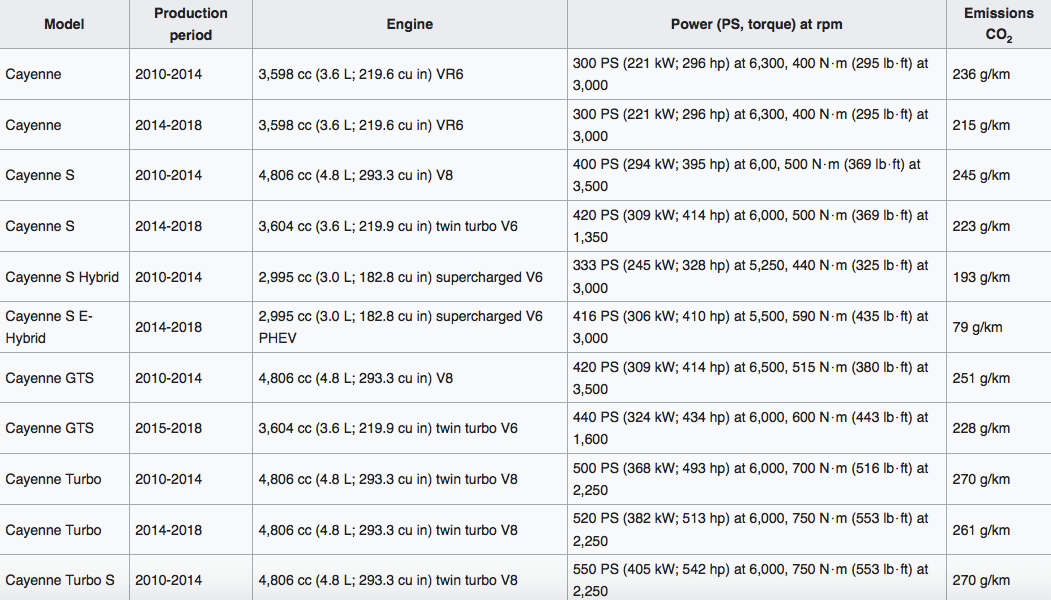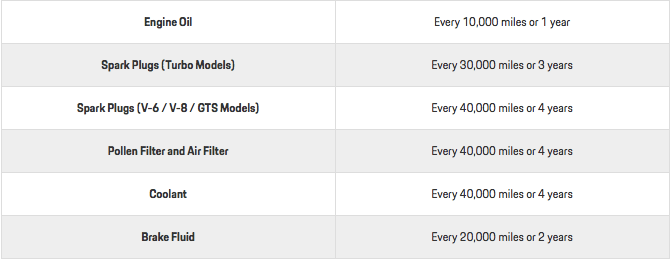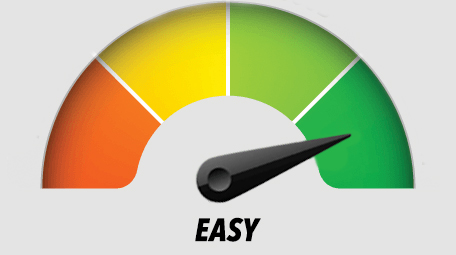Could this be the best daily driver of all time?
Depending on your preferences and needs, it very well could be.
I know a lot of our buyer’s guides are centered around exotic cars, but ever since the release of our Mercedes-Benz G55/G63 Buyers Guide, a lot of you have been emailing me about featuring another hackable SUV.
Though we now live in a world were now ALL exotic/luxury brands seem to be building SUV’s (Lamborghini URUS, Bentley Bentayga, Rolls Royce Cullinan, etc) there was a company who started this luxury SUV wave long before all others, and that is Porsche.
If you know me you know I have a true love for the brand of Porsche.
My first exotic was a 911 Turbo, and now in my garage sits a beautiful Miami Blue 2019 GT3RS.
The brand is rock solid in its craftsmanship, performance, and heritage, they never really seem to disappoint. The birth of Porsche Cayenne followed suit with their reputation.
Though the first ever Cayenne model was introduced to the world back in 2002, we are going to only be talking about the “hackable” Cayenne’s which fall under the Second Generation time table: 2011-2017.
The second generation of the Porsche Cayenne was released in 2010 at the Geneva Auto Show. The Second Gen already had it’s trims laid out for it thanks to its predecessor: Base, S, GTS, Turbo, and Turbo S. However the Second Gen got a much needed modern upgrade making it larger than it’s first gen brothers and more sleek and stylish to reflect the turn the brand had taken with the earlier released Panamera.
Though the second generation was made lighter and more agile than ever before, it’s off-road capabilities were never compromised in the name of design.
What makes the Cayenne so revolutionary to talk about is that throughout its second generational span it was offered in 3 fuel consumption variations: Gasoline (most common), Diesel, and in 2015 there came the plug-in Hybrid!
This comes at a time where Porsche was being cautious of emissions scandals both in the US and the UK. So instead of turning a blind eye, different variations were built to give the consumer options.
The second gen of the Porsche Cayenne is larger than its predecessors, as I said before.
In its figure you’ll see that it features a more slanted rear window, more body contorted front windshield, a more slanted roof, door-mounted mirrors, smaller windows at the rear of the vehicle, Carrera GT inspire headlights, new taillights that extend onto the car’s rear trunk, day time running headlights, and a more luxurious redesigned interior that takes after it’s sedan cousin: The Panamera.
Otherwise the overall exterior structure of the vehicle remained untouched by Porsche, because if there is one thing they know best: and that’s if it ain’t broke, don’t fix it!
Driving Experience
One of the things I love about writing buyers guides is the fact that I have owned all the cars I write about so I can give you impressions based on experience, which in my opinion is more valuable than any column written by some guy who only drove the car half a mile.
For a few months, I owned a 2014 Porsche Cayenne Turbo that was fully built by Prior Design. This was one of the highest sticker Turbo’s ever built, with full carbon interior, two-toned tan-saddle interior, rear entertainment, Porsche branding package and more.
Then on top of it, it had a tune, downpipes, exhaust, ADV1 wheels, and the full body kit to match. This thing turned heads wherever I went, so it was a great attention-getting daily for me.
However, that Cayenne was a diamond in the rough, hard to find one as well optioned and built these days…makes me kind of miss her.
What is truly enjoyable about the Porsche Cayenne is the fact that it is an SUV that handles like a luxury sedan.
While some SUV’s like the G63 make you feel like you are on a rough and tough safari-like drive when just going to the grocery store, the Cayenne gives you a calm and luxurious driving experience.
Though all Base Cayennes are built off the 3.6 L V6 engine which produces about 300 horsepower, the Cayenne S is based off the Panamera S engine that is 4.8 L V8 and produces almost 400 horsepower.
While the mac daddy Cayenne Turbo follows suit with the Panamera guidelines: 4.8 L V8 Twin Turbo that produces an additional 100 horsepower on top of what the S could produce on its best day.
The Hybrid version, however, uses a Volkswagen-sourced 3.0 L V6 engine producing 328 horsepower, paired with a nickel metal hydride battery capable of 46 horsepower for around 375 horsepower.
Then in 2016-2018 Porsche Cayenne GTS models were updated to a V6 Twin Turbo engine as well.
If these variations interest you more, see below of the different trim models and what they house in their engine bays.
The Porsche Cayenne is a perfect size SUV as well. What I mean by this is that it isn’t overly large like a Hummer, but isn’t a crossover either.
You are able to enjoy the space inside the Porsche Cayenne if you are a petite mom with 2 kids or a 6’3 basketball star. With an easy to use and basic interface, there won’t be any unnecessary struggle to try and change the radio station or put your address into the Navi.
Though this car is indeed an SUV it has no business being taken off-roading. This truck is NOT a more elegant G63, OK? This is a luxury SUV with a delicate suspension that can’t take climbing up a mountain. And this SUV should also NOT be taken to the track, unless you are towing your race car behind it.
With a Cayenne Turbo S, you may very well be able to put some people to shame, the car is just not race driven like some of the other Porsche models. You may think I am pointing out the obvious here, but believe it or not I have seen both instances take place and the end results are usually never good.
I enjoyed being able to use my Porsche Cayenne as my daily driver for a few months, and I can tell you the drive is just what you would expect from Porsche.
Smooth handling, quick acceleration, enjoyable interior atmosphere, and an overall joy to get in and out of whether its for a trip to Home Depot or a night out on the town
Porsche Cayenne Common Problems
Luckily, overall problems reported with the second generation Cayenne’s are few and far between. One common complaint is about pre-mature brake wear, but reports have been a bit inconclusive as to whether it is wimpy factory pads or user error.
Another issue that seems to be more common between then 2013-2014 GTS/Turbo models is a Transfer Case problem inside the power train, usually noticeable by noises when shifting gears, jerking when shifting, and loss of power. So ensure that when you are purchasing your Cayenne you get a PPI done (no matter what year or trim) to help avoid this becoming a potential issue during your ownership cycle.
The trim with the most reported issues is in fact the Diesel, with people reporting multiple engine failures at different points of ownership. However, as we are located in the U.S this isn’t an issue we have to deal with on the daily. As for our European friends, our deepest sympathies are with you.
Some recalls have been put out for the second generation Cayenne and they are recorded for you below. If you are purchasing a Cayenne within the 2011-2017 years, be sure to check with the dealer/owner that these recalls have indeed been addressed.
- Brake Pedal ( Recall # 16V169000)
Porsche Cars North America, Inc. recalled certain model year 2011-2016 Cayenne vehicles manufactured April 28, 2010, to January 11, 2016. The brake pedal pivot pin may be missing a clip, allowing the pivot pin to move and the brake pedal to dislodge. This could result in an increased risk of a crash.
- Headlights ( Recall # 12V065000)
Porsche recalled certain model year 2011-2012 Cayenne, Cayenne S, Cayenne S Hybrid, and Cayenne Turbo vehicles manufactured from March 8, 2010, through January 31, 2012, because the headlamps may come loose and detach from the fender. This could lead to loss of visibility and increased risk of a crash.
- Engine ( Recall # 17V368000)
Porsche Cars North America recalled certain 2011 Cayenne S and Cayenne Turbo vehicles. The affected vehicles have camshaft controllers that may come loose inside the engine, potentially resulting in an engine stall, that increase the risk of a crash.
- Electrical System: Instrument Panel ( Recall # 13V506000)
Porsche Cars North America, Inc. recalled certain model year 2013-2014 Cayenne and Cayenne GTS, the model year 2013 Cayenne Diesel and model year 2014 Cayenne S, S Hybrid, Turbo, and Turbo S vehicles manufactured May 27, 2013, through July 10, 2013. In the affected vehicles, the calculated range of the remaining fuel displayed on the instrument cluster may be higher than the actual range. Additionally, the fuel level indicated by the fuel gauge may also be higher than the actual amount in the tank. This inaccuracy may result in the vehicle unexpectedly running out of fuel and stalling, increasing the risk of a crash.
- Suspension ( Recall # 14V824000)
Porsche Cars North America, Inc. recalled certain model year 2015 Cayenne Diesel and Cayenne S vehicles manufactured November 26, 2014, to November 27, 2014. Due to a manufacturing error, the suspension alignment on the front and rear axles may not have been performed correctly and the screw connections of the camber, toe, and caster may not have been tightened with the specified torque. If alignment was performed incorrectly, vehicle handling could be reduced and increase the risk of a crash.
- Equipment ( Recall # 18V844000)
Porsche Cars North America, Inc. recalled certain 2017 Porsche Cayenne Turbo S, Cayenne Turbo, Cayenne Plug-in Hybrid, Cayenne GTS, Cayenne Plug-in Hybrid Platinum Edition, 2017-2018 Cayenne S, Cayenne Platinum Edition vehicles and 2018 Cayenne vehicles equipped with the optional ski bag. The ski bag fastening strap may have been sewn with incorrect thread, possibly resulting in the strap seams tearing and the ski bag being unsecured in the event of a crash, increasing risk of injury.
Porsche Cayenne Cost of Ownership/Maintenance
While it is Porsche built, it doesn’t require the assumed “Porsche” dollar to maintain. The Porsche Cayenne of the second generation comes with a 4 year, 50,000 mile basic warranty and same time/miles for the powertrain.
Now I had no service done with my Porsche when I had it, since it was so well maintained before and I only owned it for a short time. But others who have owned the car all say the same thing.
If you stick to the recommended service time table that Porsche lays out for you…without actually taking it TO Porsche for everything, the car will run forever and won’t cost you an arm and a leg every 10K miles.
Oil changes are what varies most, with Porsche dealers charging usually upwards of $350 to do one, not including taxes and fees. However, at a trusted independent shop, an oil change for the Cayenne should only cost you the regular $100-$200 all said and done.
Tires for the Porsche Cayenne can range depending on your needs, since this is an SUV some people tend to put all season tires on this bad boy, and those are the higher dollar tires.
Brake pads on the Porsche are another area you will have to visit if you are buying second hand and the previous owner didn’t keep up with them before. While a dealer may try and charge you $1,000+ for the service (without rotors) you can very easily find an independent shop, or do it yourself for less than half of the dealer quoted price.
A lot of the reason complain about the maintenance of these trucks is because they are doing it all at the franchise dealership because they think it is where the best work can be done to their cars. And yes while it is true maybe ten years ago, it is certainly not the case today.
There are independent shops all over the country that have the ability to get Porsche parts and have technicians trained on how to properly work on Cayenne models. If you wanted to take care of your million-dollar 918 with the dealer only, this, of course, is understandable, but a used Cayenne simply doesn’t require that level of attention (nor that dollar).
Porsche Cayenne Model Year Changes
2011-2014
This was the release of the Second Generation Porsche Cayenne. No changes in these years beside small engine tweaks.
2015-2017
Halfway through the generation, the Porsche Cayenne got a slightly new face, improved fuel efficiency, and better handling. The exterior changes include a newly designed front bumper, grille. Along with a redesigned rear tailgate, rear bumper, and taillights, that also features a new dual exhaust system. These years also feature better colors and wheel options making the SUV more eye-catching in design.
Porsche Cayenne Options
SUV’s tend to be built for their practicality, versus having a “Wow-factor”. The Porsche Cayenne is no different. The options that come standard on all Porsche Cayenne’s are as follows:
- Daytime running lights with four LED spotlights per headlight unit
- Multifunction sports steering wheel with gearshift paddles
- Two-zone climate control
- Eight-way electrically adjustable comfort seats
- Rear seats with fore/aft and backrest angle adjustment
- Monochrome black interior package (high-gloss)
- Automatic rear hatch
- Cruise control
- Bi-Xenon Headlights
- Anti-theft alarm system with immobilizer and ultrasonic interior detection
- 18-inch Cayenne wheels
- Bumper-to-bumper 48 month/50,000 mile warranty
- Door sill guards in stainless steel with ‘Cayenne’ logo (front)
However, If you are looking for a Porsche Cayenne with a higher sticker that is more reliant on options, the packages Cayenne’s can include are below.
Infotainment BOSE Package w/HD Radio
- SiriusXM Satellite Radio
- BOSE Surround Sound System
- Online Services
Sport Package
- Sport Chrono Package
- Air Suspension w/PASM
- Silver Sport Exhaust System
Premium Package
- Front Seat Heating
- Power Seats (14-way adjustable, with memory)
- Interior and Exterior Mirrors that automatically dim
- Porsche Dynamic Light System Bi-Xenon Headlights
- Personalized Floor Mats w/Leather Edging
- ParkAssist (Front & Rear) w/Reversing Camera
- Comfort Lighting Package
- Power Steering Plus
- Electric Sliding and Tilting Glass Sunroof
- Front Seat Ventilation
- Extended Interior Package Plus
- Leather Extended Interior Package, Dashboard
- Leather Door Release Lever & Ashtray Surround
- Leather Steering Column and Grab Handles
- Personalized Trunk Mat w/Leather Edging
- Leather Key Pouch
- Leather PCM Display Surround
- Painted Vehicle Key
Premium Package Plus
- Front & Rear ParkAssist w/Reversing Camera
- Comfort Lighting Package
- Power Steering Plus
- Interior & Exterior Mirrors (Automatically Dimming)
- Electric Sliding and Tilting Glass Sunroof
- Power Seats (14-way adjustable, with memory)
- Front & Rear Seat Heating
- Front & Rear Seat Ventilation
- Porsche Dynamic Light System LED Headlights
- Porsche Entry & Drive
- Rear Side Windows Power Sunblind
- Lane Change Assist (LCA)
Other high-dollar options that look good for resale are those below…
- Moonroof
- Double Moonroof
- Alcantara Headliner
- Dual color Interior
- Rear Entertainment.
- Carbon Fiber Interior Inserts
- PCCB- Porsche Carbon Ceramic Brakes
- Burmester Sound Upgrade
- 21’ Wheels
- Exterior Pack In High Gloss Black
- Roof Spoiler
- Sport Design Package with Side Skirts.
- Privacy Glass
- Running board (truck step)
Unlike supercars, resale on SUV’s like the Porsche Cayenne isn’t too dependent upon options but more reliant on condition, miles, and color combination. However, it never hurts to have some of the more high-level options in there just to make your listing stand out from the rest.
Best Porsche Cayenne To Buy
Here at Exotic Car Hacks, we always want to make sure you are equipped with the best information to make your next purchase as easy as possible.
So if you are in the market for a Porsche Cayenne be sure to look only at the trims GTS, Turbo, and Turbo S as the demand for these sportier trims are higher then those for base models.
Best years for the Porsche Cayenne would be 2015-2016, as it has the upgraded body, color options, and fuel consumption of the second generation and has depreciated enough to be considered a good hack.
The miles on a 2015 Cayenne should be no more than 35,000 miles (allowance is higher for SUV’s of course as they are used mainly for daily driving, road trips, work leases, etc.).
If you are looking for a hack and don’t care for the upgraded facelift of the 2015-2016 models, go for a 2014 GTS, Turbo, or Turbo S and keep miles under 45,000.
Conclusion
As always, Porsche doesn’t disappoint. Whether they are aiming to create the worlds most agile race car or the most comfortable daily driver, they knock it out of the park every single time. I never thought I would enjoy driving a Porsche Cayenne, and truth be told if I hadn’t found my fully built one back in 2018 I probably never would have bought one.
However, after my short time with the truck and also hearing great experiences from my students who have hacked the Cayenne is well, it’s one of the best SUV’s you can buy, or should I say, hack.




